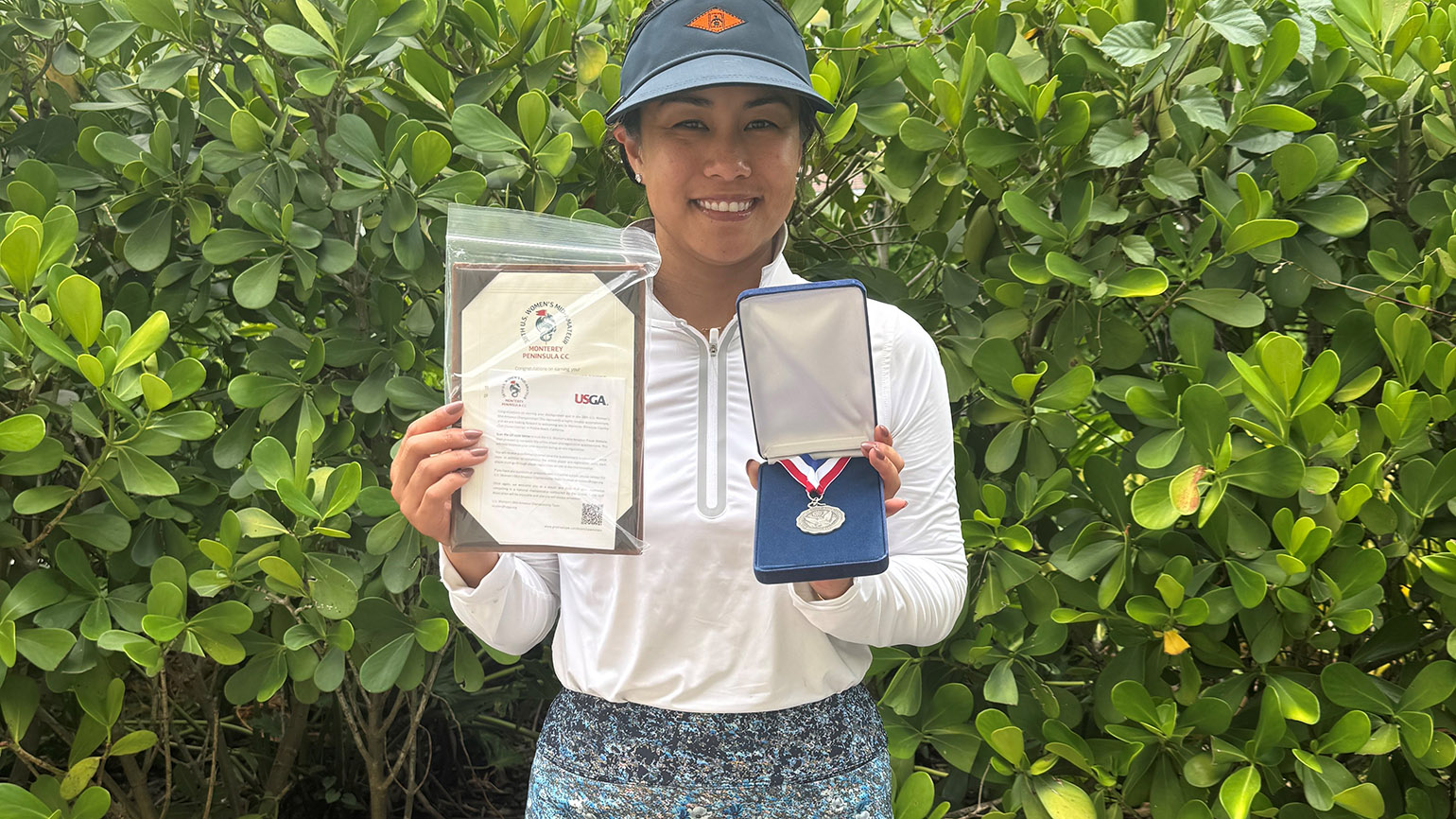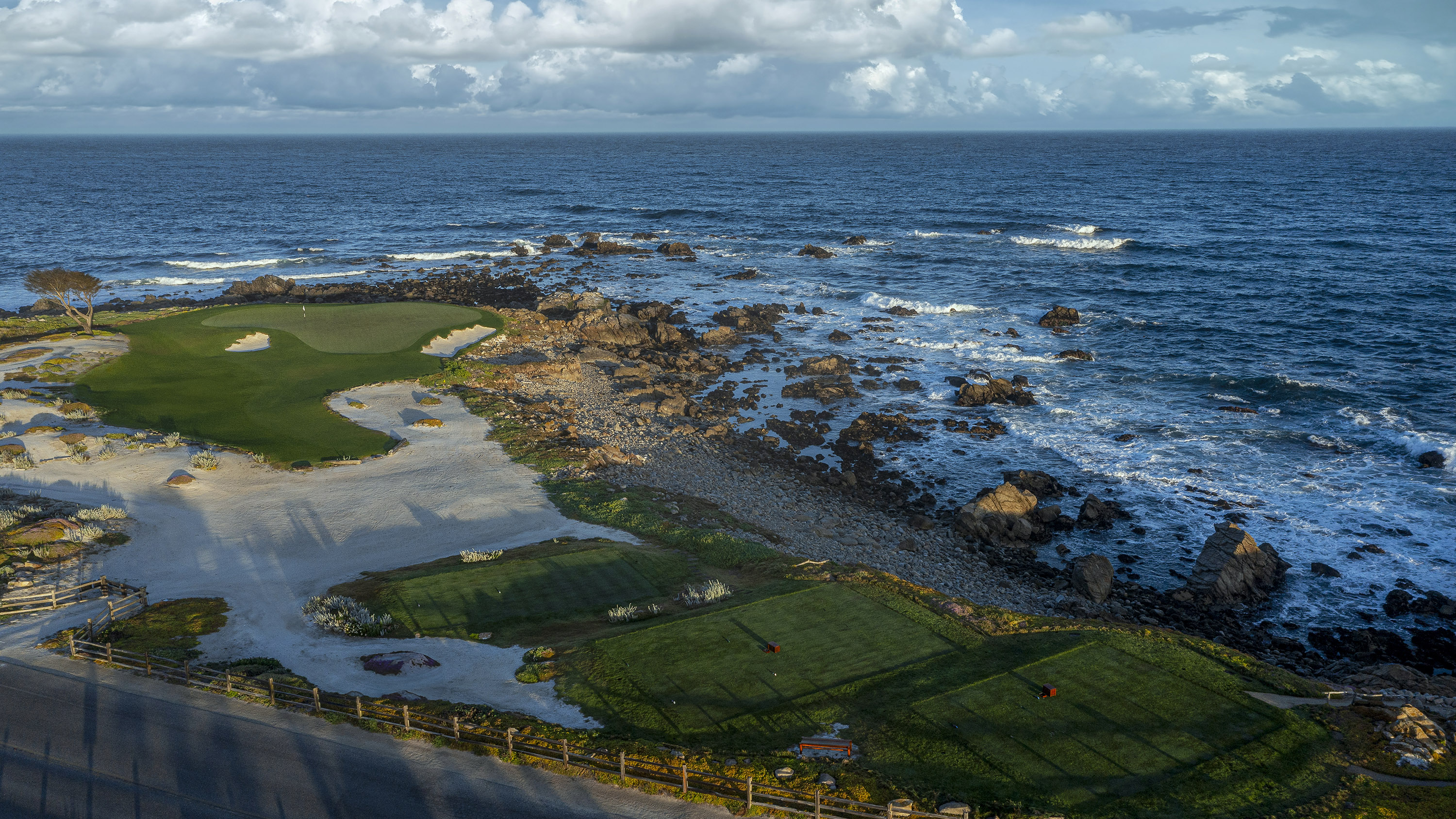Venue Spotlight: MPCC Has a Character All its Own
This content was first published in Golf Journal, a quarterly print publication exclusively for USGA Members. To be among the first to receive Golf Journal and to learn how you can help make golf more open for all, become a USGA Member today.
It started with complete strangers. Then came a handful of players. All stopped Jennifer Noonan as she walked around Brae Burn Country Club in Massachusetts during last year’s U.S. Women’s Mid-Amateur Championship.
They had noticed her wearing apparel from Monterey Peninsula Country Club, aka “MPCC,” her home club in California, which hosts the 2025 edition of the Women’s Mid-Am from Oct. 4-9 on its Dunes Course. But the delays in her scouting mission as host committee chair were welcome.
“They would recognize the sea serpent logo and say, ‘We are so excited to be going to Monterey Peninsula next year,’” she recalled. “I had players telling me that their goal that week was to make it to the Round of 16 so they would be exempt and wouldn’t have to worry about qualifying!”
One look at pictures of the Dunes Course and such excitement is understandable.
“Keep in mind, Brae Burn is a beautiful place,” added Noonan. “But the idea of being in Pebble Beach, on the ocean, at a Top 100 course, they were beyond thrilled.”
MPCC celebrates the 100th anniversary of its founding this year and has hosted four previous USGA championships. First was the 1952 U.S. Girls’ Junior, won by future four-time U.S. Women’s Open champion and World Golf Hall of Famer Mickey Wright, followed six years later by Thomas Robbins capturing the U.S. Senior Amateur. That was followed by U.S. Senior Women’s Amateurs in 1968 and 1976, won by Carolyn Cudone and Cecile Maclaurin, respectively. For Cudone, it was the first of five consecutive titles, still a USGA record for a single championship.
Consider, too, that 26 current club members have qualified for USGA championships, and there are a combined eight USGA titles in the history of the membership. Lawson Little Jr. won the 1934 and 1935 U.S. Amateurs along with the 1940 U.S. Open, while Loma Smith won the 1964 and 1965 U.S. Senior Women’s Amateurs. The lone surviving member of the trio is still thriving today – Lara Tennant counts three U.S. Senior Women’s Amateur titles (2018, 2019 and 2021) on her playing résumé.
“The Dunes Course has everything – it’s challenging, but it’s also scorable,” said Tennant. “We’ll see a lot of birdies, and there’ll be a lot of excitement, and on the final holes, people will still have a chance to come back and win.”
The deciding factor may just be the greens, according to Tennant, who is exempt into this year’s championship thanks to her lofty position in the World Amateur Golf Ranking (age 25 and over category). “The green complexes are very difficult but also subtle,” she said. “It’s hard to read the greens, and you have to get a good feel for the speed and also where you are in relation to the ocean. Every day is a different day on that course, so you’re always adjusting.”
Construction on the Dunes Course began in 1923, with a design by Seth Raynor. But he died in January 1926, leaving the work to be completed by Robert Hunter, an associate of Alister MacKenzie. Those two previously worked together at nearby Cypress Point Club, the venue for the 2025 Walker Cup being played one month prior to the Women’s Mid-Amateur.
For a while fortunate club members were allowed to play nearby Pebble Beach Golf Links for free when their own course was unplayable due to weather-related irrigation issues. Like MPCC, Pebble Beach was owned by Samuel F.B. Morse, the godfather of golf on the Monterey Peninsula. At one point Morse, MPCC’s first president, offered to sell the neighboring Cypress Point layout to MPCC members for $275,000, but they declined. (They did, however, enjoy reciprocal playing privileges there for a $2 green fee until 1945.) Members did eventually purchase MPCC in 1959, incentivized with a promise by Morse to build a second course on the property. That became the Shore Course, which opened two years later.
At the Dunes, a 2016 renovation executed by then-Fazio Design associates Tim Jackson and David Kahn injected much more of the course’s namesake into the layout. “Dave and I looked at the geometry of the course and thought, ‘Holy cow, this could be something really special,’” said Jackson. The club’s direction to the duo? “We want the best golf course you can come up with.”
That meant reducing the amount of turfgrass that needed to be irrigated. “We very much wanted to naturalize the areas where the turf went away,” said Jackson. “We certainly wanted to work with the features of the land.”
Standing in the 11th fairway early in the project, Kahn noticed a structure in the distance that he thought was a house. Informed that it was instead a dunes shelter, Kahn shook his head in disbelief.
“There were no dunes around it,” he said. “You name a course the Dunes Course and there are no dunes? That became a huge environmental improvement to make on the property. And that set us down a certain path in terms of the style we were going to create.”
Differentiating the first three holes also became a priority, as did enhancing an already exquisite collection of par-3 holes, notably the 14th, located across 17-Mile Drive and adjacent to the sea. “Since that natural setting was so good, we just had to try our best to complement it,” said Kahn. “We wanted to bring in the naturalistic theme we applied to the rest of the course to make it feel cohesive, but it was really just getting more elevation and a sexier horizon line to that green.”
Given the coastal location, wind could be a key factor during the championship, even though almost half of the holes are protected by the Del Monte Forest. “Although you don’t feel the wind in the forest as much, it’s still there,” said Tennant. “You get this great sneak peek at the ocean starting on No. 8. And then you’re just basically surrounded by the ocean through 17. They’re probably some of the most majestic holes we will ever see. But people will have to account for the wind.”
Tennant’s enthusiasm for the championship is palpable, and she predicts it will be the best of its kind to date. “I give a lot of credit to MPCC for placing priority on giving back to the game,” she said. “The members have a high golf IQ, so I’m looking forward to them watching the golf and seeing how these exceptional women play the Dunes Course, because I think they’re going to be really impressed.”
For all the compliments Noonan heard last year at Brae Burn, she’s hungry for a few more when it comes to the MPCC community.
“I want our members to look around at each other and say, ‘Wow, am I ever glad I was here for this. What a great way to celebrate the 100th anniversary of Monterey Peninsula Country Club.’”
















